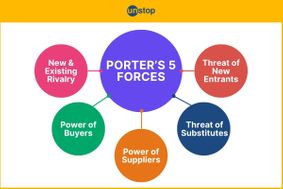- What is a Brand & Why is it Important?
- Elements of a Brand: Mission, Vision, and Values
- Types of Brands and their Significance
- Branding Strategies: Private, Multiproduct, and Mixed
- Brand Image and Its Impact on Perception
- Building a Strong Brand
- Frequently Asked Questions
- Understanding Brand Equity: Definition and Elements
- Importance of Brand Equity
- Evolution Of Brand Equity In The Digital Age
- Brand Equity in the Global Marketplace
- Measuring Brand Equity: Metrics & Methods
- Managing Brand Equity: Salient Elements
- Building & Managing Brand Equity: Best Practices
- The Future of Brand Equity
- Conclusion
- Frequently Asked Questions
- What is Brand Management?
- Importance of Brand Management
- Benefits of Effective Brand Management
- Principles of Brand Management
- Strategies for Successful Brand Management
- Brand Management vs. Marketing
- Conclusion: The Power of Brand Management
- Frequently Asked Questions
- Importance of Brand Image in Marketing
- Key Elements of a Successful Brand Image
- Brand Image vs. Brand Identity: Key Differences
- Measuring and Monitoring Brand Image
- Strategies for Maintaining and Enhancing Brand Image
- The Power of a Positive Brand Image
- FAQs
- What is Brand Awareness and its Importance?
- Benefits of Brand Awareness
- Brand Awareness Strategy: Some Tried & Tested Methods
- Some Creative Ways to Boost Brand Awareness
- Significance of Brand Awareness
- Conclusion
- Frequently Asked Questions
- Porter's 5 Forces Model: What Is It?
- Porter's 5 Forces Model: How To Use It?
- Common Barriers to Entry
- Evaluating Suppliers' Negotiating Power
- Understanding the Bargaining Power of Buyers
- Analyzing Threat of Substitute Products or Services
- Rivalry amongst Competitors (Old & New)
- Drawbacks of the Five Forces Model
- Conclusion
- Frequently Asked Questions
- How Well Do You Know Porter’s 5 Forces? Take A Quiz!
- What is Buying Motive?
- Types Of Buying Motives
- Importance Of Buying Motives
- Six Universal Buying Motives
- Identifying Buyer's Motives
- Utilizing Buying Motives In Sales
- Challenges In Interpreting Buying Motives
- Frequently Asked Questions (FAQs)
- 💸 Think You Know Buying Motives? Take A Quiz!
- Understanding the Elements and Importance of Brand Equity
- What are brand equity models?
- Comparing Keller's and Aaker's brand equity models
- Real-world examples of brand equity in action
- Strategies for building strong brand equity
- Key takeaways on brand equity models
- FAQs
- Mastered Brand Equity Models? Prove It!
- What Is Brand Positioning?
- The Importance of Brand Positioning for Businesses
- Creating A Brand Positioning Strategy: Step-By-Step Process
- Measuring the Success of Your Brand's Positioning
- Examples of Strong Brand Positioning in the Market
- Types of Brand Positioning Strategies
- Social Media Engagement: A Key Positioning Strategy
- What Makes a Good Brand Positioning Strategy?
- Conclusion
- Frequently Asked Questions
- Quick Quiz to Test Your Knowledge of Brand Positioning!
- Brand Personality: Definition & Importance
- How to Define Your Brand Personality?
- Choosing Your Brand Personality Attributes
- Dimensions of Brand Personality Framework: The Aaker Model
- Incorporating Core Values Into Your Brand Personality
- Examples of Brand Personalities in Action
- Conclusion
- Frequently Asked Questions
- Brand Personality Quiz– Let's Go!
- What is Brand Identity?
- What are the Key Components of Brand Identity?
- Importance & Benefits Of Brand Identity
- Importance of Unique Visual Elements in Brand Identity
- Communication Style and Tone of Voice in Brand Identity
- Steps on How to Create a Brand Identity
- Brand Identity Example- Coca-Cola
- Examples of Strong Brand Identities in Different Industries
- Consistency in Online and Offline Branding
- Conclusion
- Frequently Asked Questions (FAQs)
- Think You Know Brand Identity? Take A Quiz!
- Brand Identity Prism: Understanding The Concept
- Role Of Culture In Brand Identity Prism
- Brand Identity Prism: Visualizing The Sender & Receiver
- Benefits Of Brand Identity Prism
- Examples Of Brand Identity Prism In Action
- Brand Identity Prism: Key Takeaways
- Frequently Asked Questions
- Take This Brand Identity Prism Quiz!
- What is Market Segmentation?
- Importance of Market Segmentation
- The Market Segmentation Process
- Types of Market Segmentation
- Common Challenges in Implementing Market Segmentation
- Overcoming Challenges in Market Segmentation
- Conclusion: Understanding The Impact
- Frequently Asked Questions (FAQs)
- Test Your Market Segmentation Knowledge– Take This Quiz!
- What is Brand Loyalty? Meaning & Significance
- Characteristics of Brand Loyalty
- Measuring and Tracking Brand Loyalty
- Importance of Brand Loyalty for Companies
- Brand Loyalty Examples and Types
- Strategies for Building Brand Loyalty
- Differentiating Brand Loyalty from Customer Loyalty
- Conclusion: The Power and Importance of Brand Loyalty
- Frequently Asked Questions
- Think You Know Brand Loyalty? Take A Quiz!
- Brand Extension Meaning
- Brand Extension Types
- Understanding Brand Line Extension vs. Brand Extension
- The Impact and Potential of Brand Extension
- Successful and Unsuccessful Brand Extensions Examples
- Summing Up
- Frequently Asked Questions
- Quiz– Test Your Brand Extension!
- Step-by-step guide on how to build a brand from scratch
- Benefits of a Strong Brand
- Examining Successful Brand-Building Examples
- Summing up
- Frequently Asked Questions
- Know How to Build a Brand? Prove it With This Quiz!
- What is Marketing Mix?
- Understanding the 4 Ps of Marketing
- The Seven Ps of Marketing
- Implementing the Marketing Mix in Business
- Amul: Example of Successful Marketing Mix Implementation
- Exploring Alternative Marketing Mix Models
- Conclusion
- Frequently Asked Questions (FAQs)
- Mastered the Marketing Mix! Test Your Knowledge Now
- Defining Brand Value and its Importance
- Measuring Brand Value
- Factors that Make a Brand Valuable to Customers
- Examples of Brand Value from Real World
- Brand Value Versus Brand Equity
- The Impact of Brand Value on Business Marketing Strategies
- Conclusion: The Significance of Brand Value
- Frequently Asked Questions
- How Much Do You Know About Brand Value? Take This Quiz!
- Definition Of Co-Branding
- Different Types Of Co-Branding
- Benefits & Advantages Of Co-Branding
- Strategies For Successful Co-Branding Partnerships
- Notable Successful Co-Branding Examples
- Factors Influencing Co-Branding Success
- Frequently Asked Questions (FAQs)
- Co-Branding Quiz: Test Your Expertise!
- What is a Target Market?
- Importance of Target Market: Why Do We Need It?
- Types of Target Market
- The Target Marketing Process
- Primary Research for Target Markets
- Leveraging Target Market Segmentation for Sales
- Conclusion
- Frequently Asked Questions (FAQs)
- 🎯 Do You Know Your Target Market? Take the Quiz!
- Importance of Understanding Consumer Decisions
- Traditional vs Contemporary Consumer Behaviour Model
- Traditional Models of Consumer Behaviour
- Learning Model of Consumer Behaviour
- Psychoanalytical Model of Consumer Behaviour
- Sociological Model of Consumer Behaviour
- Economic Model of Consumer Behaviour
- Contemporary Models of Consumer Behaviour
- EKB Model of Consumer Behaviour
- Black Box Model of Consumer Behaviour (Stimulus-Response Consumer Behaviour Model)
- Howard Sheth Model of Consumer Behaviour
- Hawkins-Stern Model of Consumer Behavior
- Webster and Wind Model
- Nicosia Model of Consumer Behaviour
- How to Select a Consumer Behaviour Model?
- Final Remarks
- Frequently Asked Questions
- 🛍️ Consumer Behavior Models Quiz: Test Your Knowledge!
- What is a Consumer?: Definition & Role
- The Evolution of the Term "Consumer"
- Consumer Behavior
- Different Types of Consumers
- Consumers' Motivation for Buying
- Relationship Between Businesses and Consumers
- Consumer Rights in India
- Current Challenges for Consumers
- The Future of Consumers in a Digital Age
- Final Remarks
- Frequently Asked Questions (FAQs)
- 🛍️ Consumer or Customer? Test Your Knowledge!
- What is a Market Structure?
- Types of Market Structures
- How Markets Work
- Significance of Different Types of Market
- Summing Up
- Frequently Asked Questions
- 🏪 Market Structures 101: Take the Quiz!
- Understanding the Concept of Corporate Branding
- Importance and Advantages of Corporate Branding
- Researching Competitor Brands
- Implementing Effective Corporate Branding Strategies
- Successful Corporate Branding Examples: Alphabet, Walmart & SAP
- Impact and Success of Corporate Branding
- Conclusion
- Frequently Asked Questions
- 🏢 Corporate Branding Quiz: Test Your Knowledge!
- Perception Management: Meaning & Importance
- Process Of Perception Management
- Influencing & Shaping Perceptions
- Strategies For Perception Management
- Technology In Perception Management
- Branding & Control In Perception Management
- Customer Feedback For Perception Improvement
- Frequently Asked Questions (FAQs)
- 🧠 Perception Management Quiz: How Well Do You Know It?
- Definition & Importance Of Target Marketing
- Advantages & Disadvantages Of Target Marketing Strategies
- Examples Of Target Marketing Strategies
- Creating An Effective Target Market Strategy
- Segmentation: Key To Targeted Marketing
- Utilizing Social Media For Targeted Marketing
- Frequently Asked Questions ( FAQs)
- 🎯 Target Marketing Strategies Quiz: Test Your Knowledge!
- Definition and Significance of Brand Association
- Brand Association Types
- Successful Brand Association Examples
- Strategies for Building Strong Brand Associations
- Overcoming Negative Brand Associations
- Conclusion: Harnessing the Power of Brand Association
- Frequently Asked Questions
- 🔗 Brand Association Quiz: Check Your Brand Knowledge!
- What is Product Positioning?
- Importance Of Product Positioning in Marketing
- Difference between Product Positioning and Brand Positioning
- Types Of Product Positioning
- Main Components Of Product Positioning
- Successful Product Positioning Strategies
- Understanding the Product Positioning Process
- Examples Of Effective Product Positioning
- Conclusion
- Frequently Asked Questions (FAQs)
- 🔥 Product Positioning Quiz: Test Your Marketing Smarts!
- How do we define niche market?
- Strategies To Find Your Niche Market
- 7 Examples Of Niche Markets
- Benefits Of Targeting A Niche Market
- Testing Your Product Or Service For Niche Market
- Conclusion
- Niche Market: Frequently Asked Questions (FAQs)
- 🎯 Niche Market Quiz: Test Your Knowledge!
- Importance Of STP In Marketing
- Understanding STP in Marketing Step-by-Step
- Process Of Implementing STP In Marketing
- Examples Of Successful STP Strategies
- Conducting An STP Marketing Analysis
- Choosing Your Marketing Mix
- Strategies For Targeting the Right Audience
- Conclusion
- Frequently Asked Questions (FAQs)
- 🔍 STP in Marketing Quiz: Test Your Knowledge!
- Sales and Marketing: Understanding the Core Concepts
- Key Differences Between Sales and Marketing
- Types of Marketing
- Types of Sales
- Power of Synergy: Sales and Marketing Alignment (Smarketing)
- Frequently Asked Questions (FAQs)
- Definition Of Customer Satisfaction
- Importance Of Customer Satisfaction
- Strategies For Effective Customer Satisfaction
- Measuring Customer Satisfaction
- Customer Satisfaction in Marketing & Sales
- Frequently Asked Questions (FAQs)
- 🎯 Customer Satisfaction Quiz: Are You an Expert?
- Customer Delight Meaning
- Benefits of Customer Delight
- Customer Satisfaction Vs Customer Delight
- Strategies With Customer Delight Examples
- How to Measuring the Impact Of Customer Delight?
- Customer Delight Examples - 3 instances by big brands that won hearts
- Common Mistakes In Customer Delight
- Conclusion
- Frequently Asked Questions (FAQs)
- 🌟 Customer Delight Quiz: Can You Ace It?
- What is a Marketing Plan?
- Types Of Marketing Plan
- What are the Key Components of a Marketing Plan?
- Steps for Effective Marketing Planning
- Crafting Your SEO Content Strategy
- Budgeting & Resource Allocation
- Identifying & Analyzing Competition
- Measuring Success with KPIs
- Importance of Flexibility in Marketing Planning
- Challenges of Marketing Plan
- Marketing Plan vs Business Plan
- Conclusion
- Frequently Asked Questions (FAQs)
- 📊 Marketing Planning Quiz: Test Your Knowledge!
- What is Marketing Control?
- Types of Marketing Control (with Examples)
- Annual Plan Marketing Control
- Profitability Marketing Control
- Efficiency Marketing Control
- Strategic Marketing Control
- Process of Marketing Control
- Techniques Used in Marketing Control
- Frequently Asked Questions
Customer Delight: Meaning, Benefits, Strategies & Examples

In today's rapidly evolving marketplace, where competition is fierce and customer expectations are higher than ever, businesses are constantly seeking ways to not just meet but exceed these expectations. This pursuit has led to the emergence of a critical concept in customer relationship management: Customer Delight.
As we get into the nuances of customer delight, we will explore its definition, the strategies to achieve it, and how measuring its impact can transform a business's approach to service. Through real-world examples, we will illustrate the profound effect of delighting customers, showcasing how it can lead to unparalleled brand loyalty and sustainable business growth. Let's begin.
Customer Delight Meaning
Customer delight refers to the phenomenon where a business exceeds expectations, creating a memorable and delightful customer experience. It's about going beyond mere satisfaction, sparking joy and surprise in customers through exceptional service, unexpected perks, or thoughtful gestures. This concept emphasizes the importance of not just meeting needs but surpassing them to build loyalty and advocacy among customers.
Benefits of Customer Delight
Customer or client delight not only enhances the overall experience of your clientele but also serves as a pivotal element in fostering a sustainable and thriving business environment. The benefits of achieving customer delight are manifold, encompassing both immediate gains and long-term advantages.
-
Increased Customer Loyalty: Delighted customers are more likely to become repeat customers. Their positive experiences motivate them to return to your product or service, reducing the likelihood of them turning to competitors. This loyalty also translates into a more predictable revenue stream over time.
-
Word-of-Mouth Marketing: Happy customers are your best ambassadors. They are more inclined to share their positive experiences with friends, family, and through social media platforms, acting as a powerful and organic marketing tool for your business. This word-of-mouth marketing is not only cost-effective but often carries more weight than traditional advertising methods.
-
Enhanced Brand Reputation: Consistently delighting customers can significantly boost your brand's reputation. Positive reviews and high customer satisfaction scores can elevate your brand's status in the market, making it more attractive to potential customers and partners.
-
Competitive Advantage: In industries where products and prices can be similar, customer delight can be a key differentiator. Offering an unparalleled customer experience can set your business apart from competitors, potentially capturing a larger market share.
-
Higher Employee Satisfaction: Working for a company that values and achieves customer delight can be incredibly rewarding for employees. They are likely to take pride in their work, leading to higher levels of job satisfaction, better performance, and lower turnover rates.
-
Opportunities for Upselling and Cross-selling: Delighted customers trust your brand and are more open to recommendations for additional products or services. This receptiveness can create opportunities for upselling and cross-selling, contributing to increased sales without the need for significant marketing expenditure.
-
Reduced Impact of Negative Feedback: No business is immune to occasional negative feedback. However, a strong foundation of delighted customers can help cushion the impact. Loyal customers are more likely to forgive minor missteps and continue supporting your business despite setbacks.
-
Valuable Feedback for Improvement: Delighted customers are often more engaged and willing to provide constructive feedback. This insight can be invaluable for continuous improvement, helping you refine your offerings and address any areas of concern proactively.
Investing in strategies that aim to delight customers can yield substantial benefits for businesses across various aspects, from bolstering brand loyalty and enhancing brand reputation to securing a competitive edge in the market.
Customer Satisfaction Vs Customer Delight
The two terms may sound similar but there are major differences between the two.
| Aspect | Customer Satisfaction | Customer Delight |
|---|---|---|
| Definition | The level at which customer expectations are met by a product or service. | Exceeding customer expectations to create a memorable and positive experience. |
| Focus | Meeting basic expectations and needs. | Going above and beyond basic expectations. |
| Emotional Connection | Generally neutral; the customer got what they expected. | Strong positive emotional reaction; the customer feels valued and surprised. |
| Measurement | Typically measured through satisfaction surveys and feedback. | Measured through enthusiastic feedback, repeat business, and word-of-mouth. |
| Outcome | Customers are content and their requirements are fulfilled. | Customers become loyal advocates, often leading to increased brand loyalty. |
| Effort from the Business | Doing what is necessary to fulfill promises and obligations. | Investing additional effort to create wow moments and unique experiences. |
| Predictability | High; customers have a clear set of expectations that are met. | Low; customers receive more than what they anticipated. |
| Impact on Customer Loyalty | Positive impact, but primarily if consistently met over time. | Can immediately strengthen loyalty due to emotional engagement and surprise. |
Strategies With Customer Delight Examples
Achieving customer delight is about going beyond customer satisfaction to create memorable and positive experiences that make customers feel valued and appreciated. Here are some strategies for achieving customer delight, along with examples of each:
Personalized Service
Providing personalized service means understanding and anticipating the needs of your customers.
For example, a hotel that remembers a returning guest’s preference for a room away from the elevator and has their favorite snacks waiting in their room upon arrival demonstrates personalized service. This level of attention shows the customer they are remembered and valued.
Surprise and Delight Tactics
Surprising your customers with unexpected gestures can turn ordinary interactions into memorable experiences.
For instance, an online retailer could include a free sample or handwritten thank you note with a customer’s order. These small surprises can make a big impact on how customers perceive your brand.
Proactive Problem Solving
Addressing potential issues before they become problems for your customers can significantly enhance their experience with your brand.
For example, a software company that releases a patch to fix a bug before most users even become aware of it exemplifies proactive problem solving. This strategy shows customers that you are always looking out for their best interests.
Empowering Your Employees
Customer delight has a lot to do with providing employees with some level of autonomy. The teams should have the authority to make decisions that will lead to positive customer experiences.
For example, empowering a customer service team to waive a late fee or expedite shipping without going through layers of approval can resolve issues quickly and efficiently, leading to a delighted customer.
Soliciting and Acting on Feedback
Showing consumers that their opinions are valued by not only asking for feedback but also acting on it is crucial.
For instance, a restaurant that adjusts its menu based on customer suggestions demonstrates that it values customer input and is committed to improving the dining experience.
Creating a Community
Building a community around your brand can enhance customer loyalty and delight. For example, a fitness brand that creates an online forum for customers to share their workout achievements, challenges, and tips fosters a sense of belonging and support among its user base.
Exceptional After-Sales Support: Providing excellent support after a sale can turn a satisfied customer into a delighted one.
For example, an electronics manufacturer offering a dedicated 24/7 technical support hotline for troubleshooting post-purchase issues exemplifies exceptional after-sales support.
Continuous Improvement
Continuously striving to improve every aspect of the customer experience shows commitment to excellence.
A real-life example can be of a software company that regularly updates its user interface based on user experience research and testing demonstrates an ongoing commitment to improving its product for users.
By implementing these strategies, businesses can create delightful experiences that exceed customer expectations, foster loyalty, and encourage positive word-of-mouth, thereby differentiating themselves in a competitive market.
How to Measuring the Impact Of Customer Delight?
Measuring the impact of customer delight involves a multifaceted approach, blending both qualitative and quantitative methods to capture the essence of customer satisfaction and its ripple effects on business performance. Here’s how organizations can effectively gauge the impact of delighting their customers:
Net Promoter Score (NPS)
This metric asks customers how likely they are to recommend a company's product or service to others on a scale of 0-10. It categorizes respondents into Promoters, Passives, and Detractors. A high NPS indicates that customers are delighted and likely to engage in word-of-mouth promotion, a powerful indicator of customer delight.
Customer Satisfaction Score (CSAT)
CSAT measures how products or services meet or surpass customer expectations. Typically obtained through surveys with questions rated on a scale, it provides immediate feedback on customer satisfaction levels after specific interactions or transactions, highlighting areas of delight or disappointment.
Customer Effort Score (CES)
This assesses how easy it is for customers to get their issues resolved, use a product, or interact with a service. Lower effort scores are often correlated with higher levels of customer delight, as ease of interaction is a key component of positive experiences.
Social Media Sentiment Analysis
Analyzing comments, reviews, and posts about a brand on social media platforms can provide insights into customer emotions and satisfaction. Positive sentiments and stories of exceptional service often reflect customer delight.
Repeat Purchase Rate
A high rate of repeat purchases can indicate that customers are delighted enough with a product or service to come back. This metric, while straightforward, is a powerful testament to the effectiveness of delighting customers.
Customer Lifetime Value (CLV)
Delighted customers often have a higher CLV or custome lifetime value to the company. By measuring the projected revenue a customer will bring over their entire relationship with the company and observing shifts in this metric, businesses can infer the impact of customer delight strategies.
Churn Rate
Monitoring how many customers stop using a company's product or service over time can indirectly measure customer delight. A lower churn rate suggests higher satisfaction and delight among the customer base.
Employee Engagement and Feedback
Employees are on the front lines of delivering customer experiences. Their insights and feedback can be invaluable in understanding how well a company delights its customers. Engaged employees are often more attuned to customer needs and better equipped to deliver delightful experiences.
Qualitative Feedback
Beyond numerical scores, collecting qualitative feedback through open-ended survey questions, interviews, and focus groups can uncover the nuances of customer delight that numbers alone cannot capture.
Incorporating these methods into a comprehensive strategy allows businesses to gain a holistic view of how well they are delighting customers and the impact of these efforts on overall business performance. Understanding and measuring customer delight is an ongoing process that requires attention to detail, responsiveness to feedback, and a commitment to continuous improvement.
Customer Delight Examples - 3 instances by big brands that won hearts
Zomato - Personalized Birthday Surprise
Zomato, an Indian food delivery service, has carved a niche for itself in customer delight with its personalized gestures. A notable example is when a customer mentioned in passing that it was their birthday while chatting with customer support about an order issue.
Not only did Zomato resolve the issue promptly, but they also surprised the customer by delivering a birthday cake along with a heartfelt note. This unexpected gesture turned a routine interaction into a memorable experience, showcasing Zomato's commitment to going above and beyond for its customers.
Amazon - Unexpected Refund and Retention
Amazon is renowned for its customer-centric approach, and one incident that stands out involves a customer who received a damaged product. Upon contacting Amazon's customer service, the customer was not only immediately refunded without having to return the damaged item but was also allowed to keep or donate the product.
Furthermore, Amazon expedited the shipping of a replacement item at no additional cost. This level of understanding and efficiency not only solved the problem but also significantly enhanced the customer's perception of Amazon, reinforcing loyalty.
Tata Sky - The Service Visit That Went Beyond
Tata Sky, a leading Indian direct broadcast satellite service provider, demonstrated exceptional customer service when a technician visited a subscriber's home for a routine service check. Noticing that the elderly customer lived alone and struggled with mobility, the technician took it upon himself to spend extra time setting up voice commands on the remote control, making it easier for the customer to operate the TV without having to move around.
The technician also patiently explained how to use the new feature and ensured the customer was comfortable with it before leaving. This act of kindness and the technician's initiative to provide a solution that the customer hadn't even thought to ask for exemplifies Tata Sky's dedication to customer satisfaction.
Common Mistakes In Customer Delight
In this section, we will discuss the most common mistakes companies make when trying to achieve customer delight.
Pitfalls Of Overdelivering
Overdelivering consistently may set unrealistic expectations for customers. When businesses constantly go above and beyond, customers start to anticipate that level of service all the time. While it may seem like a great way to impress and retain customers, it can actually backfire. Not only does it become difficult to maintain such high standards, but it can also be costly or unsustainable for businesses in the long run.
Striking a balance between meeting expectations and occasional surprises is vital. Instead of always exceeding expectations, focus on consistently delivering what you promise while occasionally surprising your customers with unexpected delights. This way, you manage their expectations effectively and create memorable moments that stand out from the norm.
Do Not Try To Delight Everyone
Attempting to please everyone dilutes your efforts and resources. Different customers have different preferences, making it impossible to satisfy all of them completely. Instead of spreading yourself too thin trying to cater to everyone's desires, it's more effective to focus on your target audience. Rather than trying to delight everyone, concentrate on delighting those who are most likely to become loyal advocates for your brand.
Remember that customer delight doesn't mean going overboard with extravagant gestures or expensive gifts for every single customer. It's about creating meaningful connections and experiences that leave a lasting impression.
Conclusion
In conclusion, achieving customer delight is a multifaceted process that involves an in-depth understanding of customer expectations and the implementation of effective strategies. By focusing on principles such as personalization, responsiveness, and consistency, businesses can create exceptional experiences that leave a lasting impression on their customers. Measuring the impact of customer delight through metrics like Net Promoter Score (NPS) and customer satisfaction surveys can provide valuable insights for continuous improvement.
By prioritizing customer delight, businesses can foster loyalty, drive positive word-of-mouth, and gain a competitive edge in today's market. Embracing a customer-centric mindset and continuously seeking opportunities for improvement will ultimately lead to long-term success.
Frequently Asked Questions (FAQs)
Q1. What is customer delight?
Customer delight refers to the act of exceeding customer expectations by providing exceptional products or services. It involves going above and beyond to create positive experiences that leave customers feeling satisfied, valued, and eager to recommend your business.
Q2. Why is customer delight important?
Customer delight plays a crucial role in building strong customer relationships and fostering loyalty. By consistently delivering delightful experiences, businesses can differentiate themselves from competitors, increase customer retention rates, drive positive word-of-mouth referrals, and ultimately boost their bottom line.
Q3. How can businesses achieve customer delight?
To achieve customer delight, businesses should focus on understanding their customers' needs and preferences. This can be done through market research, collecting feedback, and analyzing data. By personalizing interactions, offering proactive support, providing quick resolutions to issues, and continuously improving their offerings based on customer feedback, businesses can create memorable experiences that lead to customer delight.
Q4. What are the benefits of customer delight?
Customer delight has numerous benefits for businesses. It helps foster long-term relationships with customers who become brand advocates and provide valuable referrals. Delighted customers are more certain to remain loyal even when faced with competitive offers. Customers who are happy and delighted tend to spend more money over time and are less price-sensitive compared to dissatisfied customers.
Q5. How can businesses measure customer delight?
Measuring customer delight requires a combination of qualitative and quantitative methods. Businesses can use surveys, Net Promoter Score (NPS), Customer Satisfaction (CSAT) scores, social media sentiment analysis, and monitoring online reviews as indicators of how delighted their customers are. Regularly tracking these metrics allows businesses to effectively work toward achieving customer delight.
🌟 Customer Delight Quiz: Can You Ace It?
Suggested reads:
Alekhya Chakrabarty is a father, a doodler, a trivia buff, a sports fanatic and a lifelong student of marketing. Alekhya is the VP of Marketing & Growth at Unstop, the engagement and hiring platform which connects students and graduates with opportunities. He has over a decade and a half of experience in driving revenue and building brands with the likes of Nestle, HUL and ITC. He is an alumnus of IMT Ghaziabad and in his last stint he was leading the marketing function at Sunstone, a higher education startup. Alekhya has been recognised as a ‘Top Voice’ on LinkedIn for Digital Marketing & Brand Management. He runs a marketing podcast titled East India Marketing Company to drive conversations around growth, content, culture and commerce.
Login to continue reading
And access exclusive content, personalized recommendations, and career-boosting opportunities.
Subscribe
to our newsletter
















Comments
Add comment